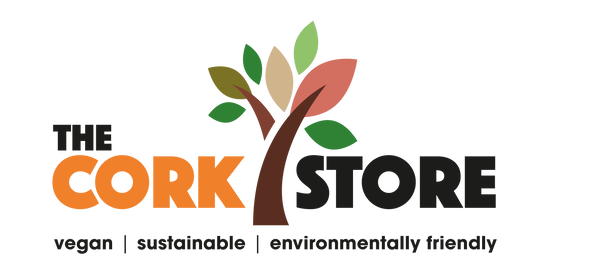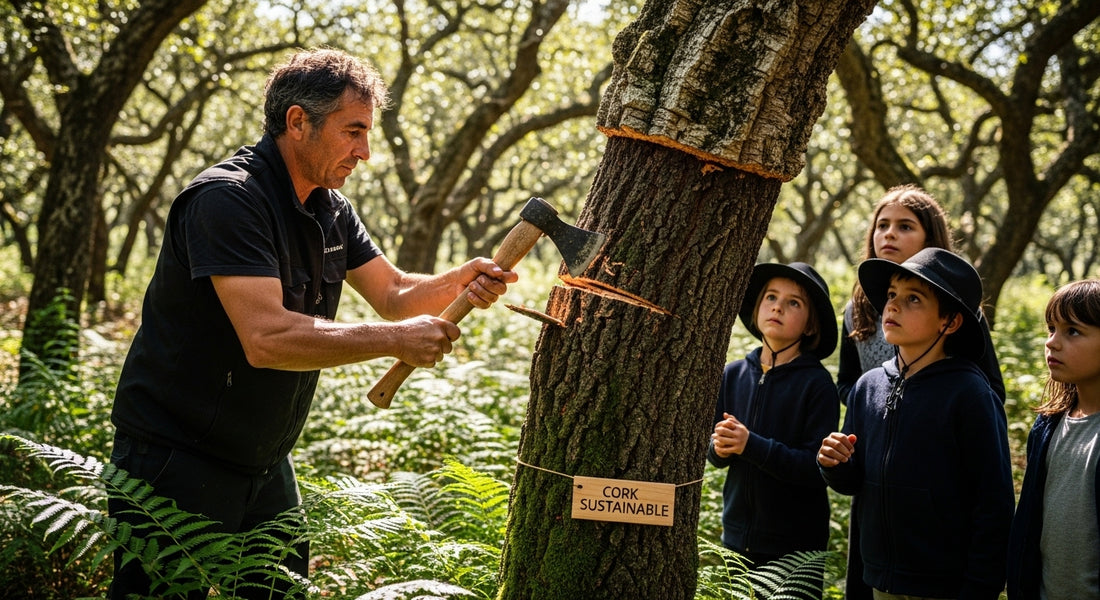
Understanding How Cork Bags are Made Naturally
Share
Cork might sound like something reserved for wine bottles or pinboards but its story is far bigger than that. Think about this: cork oak forests absorb up to 4.8 tonnes of carbon per hectare every year and the bark is harvested without harming the trees at all. So while most materials exhaust the planet or pollute with every use cork quietly regenerates and actually helps the environment every time it is collected.
Table of Contents
- What Is Cork And Why Is It Sustainable?
- The Process Of Harvesting Cork: From Tree To Fabric
- How Cork Is Transformed Into Bags: Production Insights
- The Benefits Of Choosing Cork Bags: Environment And Style
- Real-World Applications: Brands And Trends In Cork Fashion
Quick Summary
| Takeaway | Explanation |
|---|---|
| Cork is a sustainable material | Cork can be harvested without damaging the cork oak tree, making it eco-friendly. |
| Cork forests sequester carbon | Cork oak forests absorb significant carbon dioxide, aiding climate change mitigation. |
| Cork bags combine eco-friendliness with style | Cork bags offer sustainable fashion options while being durable and aesthetically pleasing. |
| Quality control ensures durability | Careful selection and manufacturing processes enhance the durability and appeal of cork products. |
| Cork supports biodiversity | Harvesting cork preserves natural habitats, benefiting various plant and animal species. |
What is Cork and Why is it Sustainable?
Cork represents a remarkable natural material harvested from the bark of cork oak trees, offering an extraordinary solution for sustainable manufacturing. Unlike many other raw materials, cork can be extracted without harming or cutting down the tree, making it one of the most environmentally friendly resources available.
The Unique Origin of Cork
Cork originates from the Quercus suber, or cork oak tree, primarily found in Mediterranean regions like Portugal, Spain, and parts of North Africa. These remarkable trees have an extraordinary ability: their bark can be carefully stripped every 9-12 years without causing permanent damage. This unique regenerative process allows the tree to continue growing and producing cork throughout its 200-year lifespan.
The harvesting process is both an art and a science. Skilled workers use specialized axes to carefully remove the outer bark, ensuring the inner layers remain intact. This method allows the tree to heal and regrow its protective bark, creating a sustainable cycle of production that supports both environmental conservation and local economies.
Environmental Benefits of Cork
The sustainability of cork extends far beyond its harvesting method. Cork oak forests play a critical role in carbon sequestration, absorbing significant amounts of carbon dioxide from the atmosphere. According to WWF Portugal, these forests can capture up to 4.8 tonnes of carbon per hectare annually, making them powerful natural carbon sinks.
Key environmental advantages of cork include:
- Renewable Resource: Cork can be harvested repeatedly without destroying the tree
- Carbon Negative: Cork forests absorb more carbon than is used in production
- Biodiversity Support: Cork oak forests provide habitats for numerous plant and animal species
- Low Energy Production: Manufacturing cork products requires minimal processing compared to synthetic materials
Moreover, cork’s natural properties make it an incredibly versatile material. Its cellular structure contains millions of tiny air-filled chambers, providing excellent insulation, water resistance, and durability. These inherent characteristics make cork an ideal sustainable alternative for various applications, from fashion accessories to construction materials, without compromising on performance or aesthetic appeal.
The Process of Harvesting Cork: From Tree to Fabric
Transforming cork from living tree bark into versatile fabric involves a meticulous and environmentally conscious process that requires exceptional skill, traditional knowledge, and precision. This intricate journey transforms raw natural material into a sustainable textile with remarkable properties.
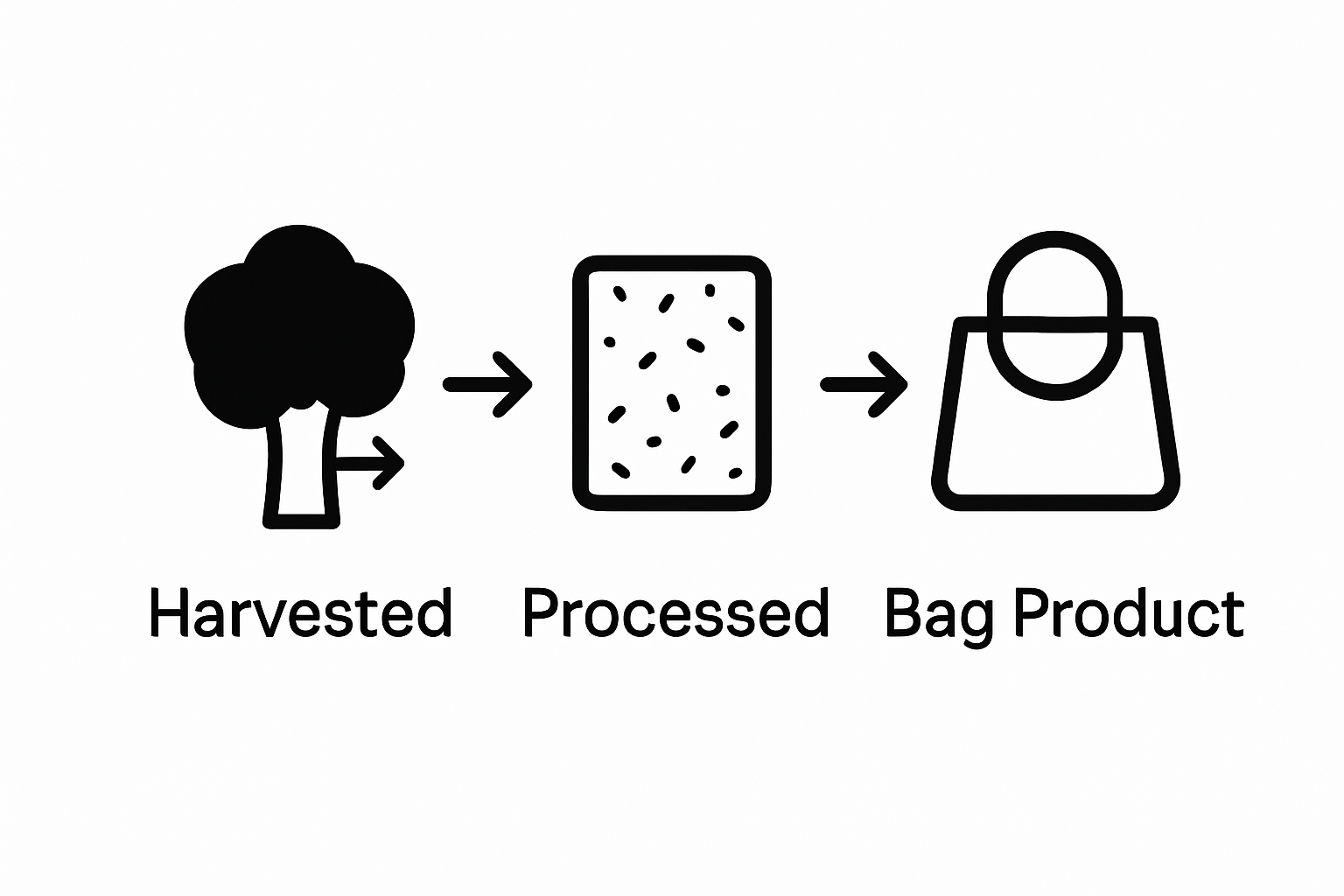
Cork Extraction Techniques
The initial stage of cork production begins with careful bark removal from cork oak trees. Skilled workers, known as extractors or “descortiçadores” in Portugal, use specialized axes to strip the bark without damaging the tree’s inner layers. According to UC Davis Agricultural Research, this delicate process requires extensive training and experience to ensure the tree remains healthy and continues producing cork for decades.
The extraction process follows strict guidelines:
- First harvest occurs when the tree reaches approximately 25 years of age
- Subsequent harvests happen every 9-12 years
- Only the outer bark is removed, allowing the tree to regenerate
- Extraction typically occurs during late spring and early summer when tree bark is most flexible
Transforming Bark into Fabric
Once harvested, the cork bark undergoes several sophisticated processing stages to become a usable textile material. The raw cork is initially cleaned, boiled, and sorted to remove impurities and ensure consistent quality. Specialized manufacturing techniques then slice the cork into incredibly thin, flexible sheets that can be bonded with other sustainable backing materials like organic cotton or recycled polyester.
The fabric production involves advanced technological processes that maintain cork’s natural characteristics. Manufacturers use heat and pressure to create flexible, durable sheets that retain the material’s inherent water-resistant, lightweight, and breathable qualities.
This transformation allows cork to transition from a rigid bark to a supple, versatile fabric suitable for fashion accessories, clothing, and other textile applications.
Modern cork fabric production represents a remarkable intersection of traditional harvesting techniques and cutting-edge sustainable manufacturing. By preserving the cork oak’s natural lifecycle and utilizing minimal processing, manufacturers create a textile that embodies environmental responsibility while delivering exceptional performance and aesthetic appeal.
How Cork is Transformed into Bags: Production Insights
The journey from raw cork bark to a finished bag involves a sophisticated transformation process that combines traditional craftsmanship with modern sustainable manufacturing techniques. This intricate process requires precision, skill, and innovative technological approaches to convert a natural material into a functional and stylish accessory.
Initial Cork Preparation
Before cork can become a bag, it must undergo several critical preparation stages. The raw cork sheets are first carefully selected, inspecting for quality, consistency, and structural integrity. According to Sustainable Materials Research, this initial selection process is crucial in determining the final product’s durability and aesthetic appeal.
The preparation process involves:
- Cleaning and sanitizing the cork sheets
- Removing any natural imperfections
- Cutting the material into precise, uniform dimensions
- Treating the cork to enhance its flexibility and strength
Manufacturing Cork Bag Fabric
Transforming cork into a fabric suitable for bag production requires advanced manufacturing techniques. Manufacturers employ specialized methods to create thin, flexible cork sheets that can be easily manipulated. These sheets are typically bonded with supportive backing materials like organic cotton or recycled polyester, creating a composite fabric that combines cork’s unique properties with additional structural strength.
The manufacturing process involves sophisticated techniques such as:
- Applying heat and pressure to create flexible cork sheets
- Laminating cork with supportive backing materials
- Treating the fabric to enhance water resistance
- Ensuring consistent thickness and texture
Crafting the Final Product
Once the cork fabric is prepared, skilled artisans transform it into functional bags through a combination of traditional tailoring techniques and modern design principles. Each bag represents a careful balance between aesthetic design, structural integrity, and environmental sustainability. Manufacturers pay close attention to cutting patterns, stitching techniques, and finishing details to create a product that is both visually appealing and highly functional.
The final stage involves precision cutting, expert stitching, and careful quality control to ensure that each cork bag meets high standards of craftsmanship and durability. This meticulous process transforms a natural material into a sophisticated, eco-friendly accessory that showcases the remarkable potential of sustainable manufacturing.
Below is a table that outlines the main stages involved in transforming raw cork bark into finished cork bags, helping clarify the step-by-step sustainable production process discussed in the article.
| Stage | Description |
|---|---|
| Cork Extraction | Skilled workers harvest bark by hand every 9-12 years without harming the tree. |
| Initial Preparation | The cork is cleaned, sanitised, and cut into uniform sheets, with imperfections removed. |
| Fabric Manufacture | Sheets are bonded with organic cotton or recycled polyester and treated for flexibility. |
| Sheet Processing | Heat and pressure are used to ensure the fabric is thin, stable, and water resistant. |
| Crafting and Assembly | Artisans cut, stitch, and finish cork fabric into bags, ensuring durability and quality. |
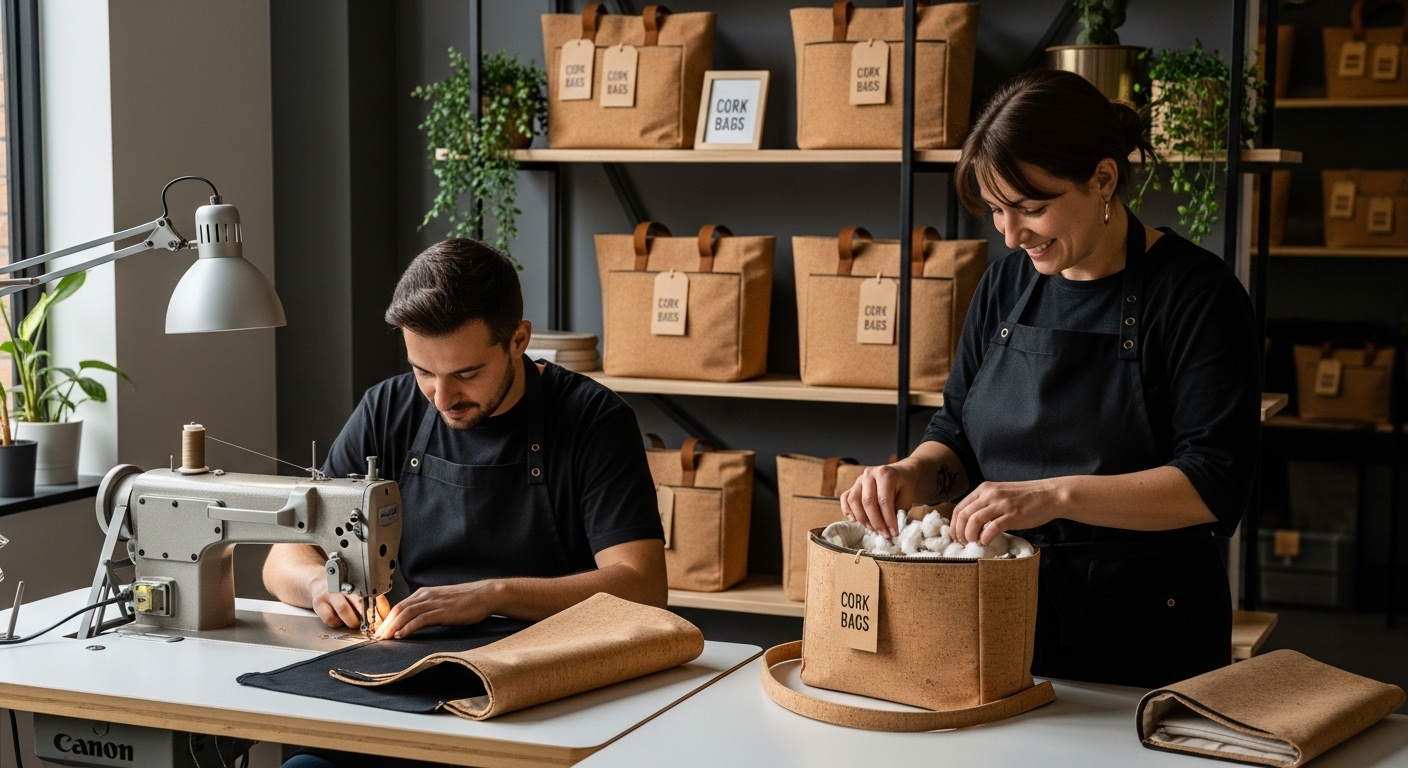
The Benefits of Choosing Cork Bags: Environment and Style
Cork bags represent a revolutionary fusion of sustainable design and contemporary fashion, offering consumers an environmentally responsible alternative to traditional accessories. These innovative bags combine ecological integrity with aesthetic sophistication, challenging conventional perceptions of sustainable fashion.
Environmental Advantages
Choosing cork bags delivers substantial environmental benefits that extend far beyond typical accessory selections. According to Sustainable Materials Research, cork production supports critical ecological systems while minimizing environmental impact. The material’s production process ensures minimal carbon footprint and promotes biodiversity conservation.
Key environmental benefits include:
- Zero Tree Damage: Harvesting cork does not harm the cork oak tree
- Carbon Sequestration: Cork oak forests actively absorb atmospheric carbon dioxide
- Renewable Resource: Cork can be repeatedly harvested without depleting natural resources
- Biodegradability: Unlike synthetic materials, cork naturally decomposes
Performance and Aesthetic Qualities
Cork bags are not just environmentally responsible but also deliver exceptional performance characteristics. The material’s unique cellular structure provides remarkable properties that make it an outstanding choice for fashion accessories. Cork fabric offers water resistance, durability, and lightweight comfort, challenging traditional leather and synthetic alternatives.
The aesthetic versatility of cork allows designers to create bags that are simultaneously modern and timeless. Its natural texture provides a distinctive appearance that ranges from minimalist elegance to intricate, artisanal designs.
This table concisely compares cork with traditional materials commonly used in bag manufacturing, highlighting the benefits and distinctive features that set cork apart in terms of sustainability and performance.
| Property | Cork | Leather | Synthetic Materials |
|---|---|---|---|
| Source | Renewable tree bark | Animal hide | Petroleum-based |
| Harvest Impact | No harm to trees | Animal slaughter | High environmental cost |
| Biodegradability | Biodegradable | Biodegradable | Non-biodegradable |
| Water Resistance | Naturally resistant | Requires treatment | Varies |
| Carbon Footprint | Low/negative | Moderate to high | High |
| Weight | Lightweight | Heavier | Lightweight |
| Vegan Friendly | Yes | No | Yes |
Furthermore, cork bags represent a statement of conscious consumption. By selecting these accessories, individuals communicate their commitment to sustainable fashion and environmental stewardship. Each cork bag becomes more than just an accessory—it represents a choice to support innovative, eco-friendly manufacturing practices that prioritize both style and planetary well-being.
Real-World Applications: Brands and Trends in Cork Fashion
Cork fashion represents a dynamic and rapidly evolving sector where sustainability meets innovative design, transforming traditional accessory manufacturing through environmentally conscious practices. This emerging market segment demonstrates how ecological responsibility can coexist with cutting-edge style and functional performance.
Emerging Design Pioneers
Innovative designers and brands are increasingly embracing cork as a transformative material, reimagining fashion accessories with sustainable principles. According to Fashion Innovation Research, the industry is experiencing a significant shift towards materials that minimise environmental impact while delivering exceptional aesthetic and functional qualities.
Key trends in cork fashion include:
- Minimalist Design: Emphasising clean lines and natural textures
- Modular Accessories: Creating versatile pieces that adapt to multiple styles
- Artisanal Craftsmanship: Highlighting handmade production techniques
- Experimental Color Palettes: Exploring unique dyeing and finishing methods
Sustainable Fashion Movement
The cork fashion movement extends beyond mere product creation, representing a broader commitment to environmental stewardship and ethical manufacturing. Designers are not simply producing accessories but constructing narratives around responsible consumption, material innovation, and circular economy principles.
Manufacturers are developing sophisticated techniques to transform cork into flexible, durable fabrics that challenge traditional material perceptions. These advancements enable the creation of bags, wallets, and accessories that compete with conventional leather and synthetic alternatives in terms of quality, durability, and aesthetic appeal.
By choosing cork, consumers participate in a global movement that supports sustainable forestry, reduces environmental impact, and promotes innovative manufacturing practices. Each cork accessory becomes a statement piece that communicates commitment to ecological preservation and forward-thinking design, bridging the gap between environmental consciousness and contemporary fashion trends.
Ready to Make a Real Change with Authentic Cork Bags?
After learning about the natural harvesting and careful transformation detailed in “Understanding How Cork Bags are Made Naturally,” you may be searching for sustainable accessories that do not compromise on ethics or quality. Perhaps you are frustrated by conventional leather products or are seeking a truly cruelty-free alternative that supports both the planet and timeless style. Our eco-friendly cork range tackles these pain points directly, ensuring every accessory is crafted from renewable, carbon-negative cork, and designed for modern, mindful living.
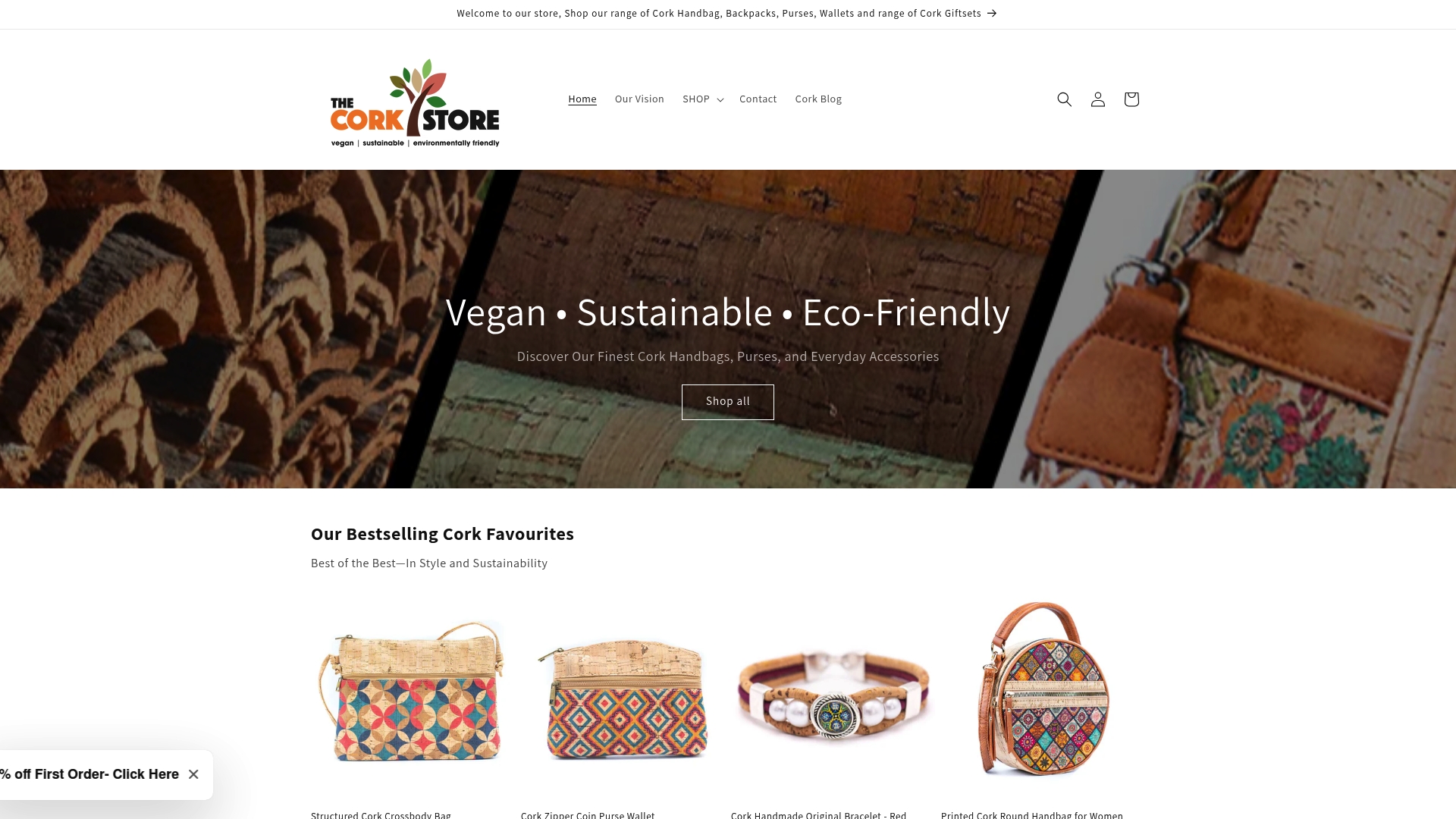
Do not just read about the benefits of cork. Experience them for yourself with our handpicked selection of vegan cork handbags, wallets, and backpacks. Each item represents sustainable innovation, exceptional durability, and a stronger commitment to ethical fashion. Explore our latest arrivals and discover the remarkable difference at The Cork Store. Shop consciously and bring home an accessory that truly aligns with your values, today.
Frequently Asked Questions
What is cork and how is it harvested?
Cork is a natural material derived from the bark of cork oak trees, harvested without harming the tree. Skilled workers strip the bark every 9-12 years, allowing the tree to continue growing and producing cork.
Why are cork bags considered environmentally friendly?
Cork bags are made from a renewable resource that does not damage the trees. The production process has a minimal carbon footprint and cork oak forests actively absorb carbon dioxide, making them a sustainable choice.
What are the unique properties of cork that make it suitable for bags?
Cork has a unique cellular structure that provides water resistance, durability, and lightweight comfort. These characteristics make it an excellent alternative to traditional materials like leather and synthetic fabrics.
How are cork bags manufactured from raw cork?
The manufacturing process involves cleaning and treating the raw cork, transforming it into thin, flexible sheets. These sheets are then bonded with supporting materials and crafted into bags using both traditional sewing techniques and modern design methods.
